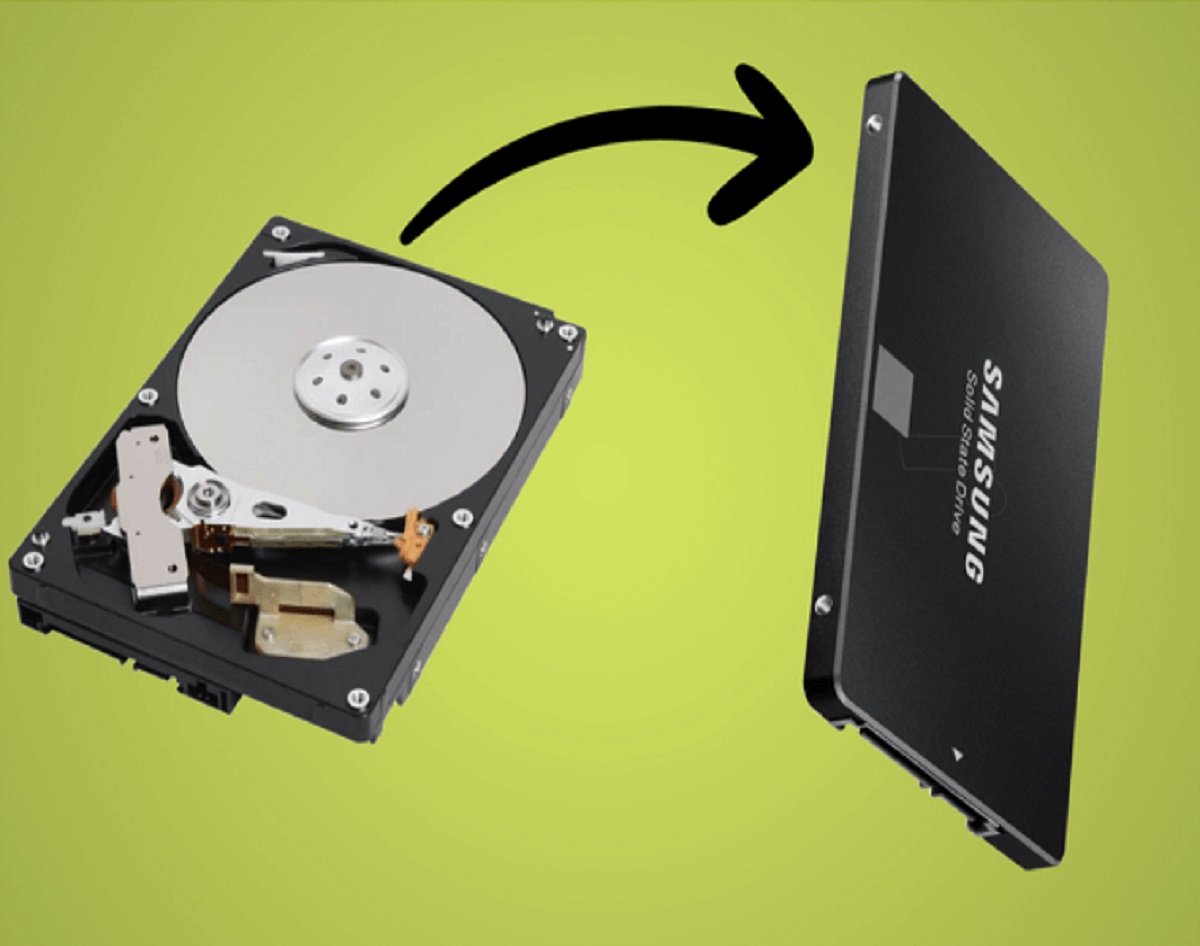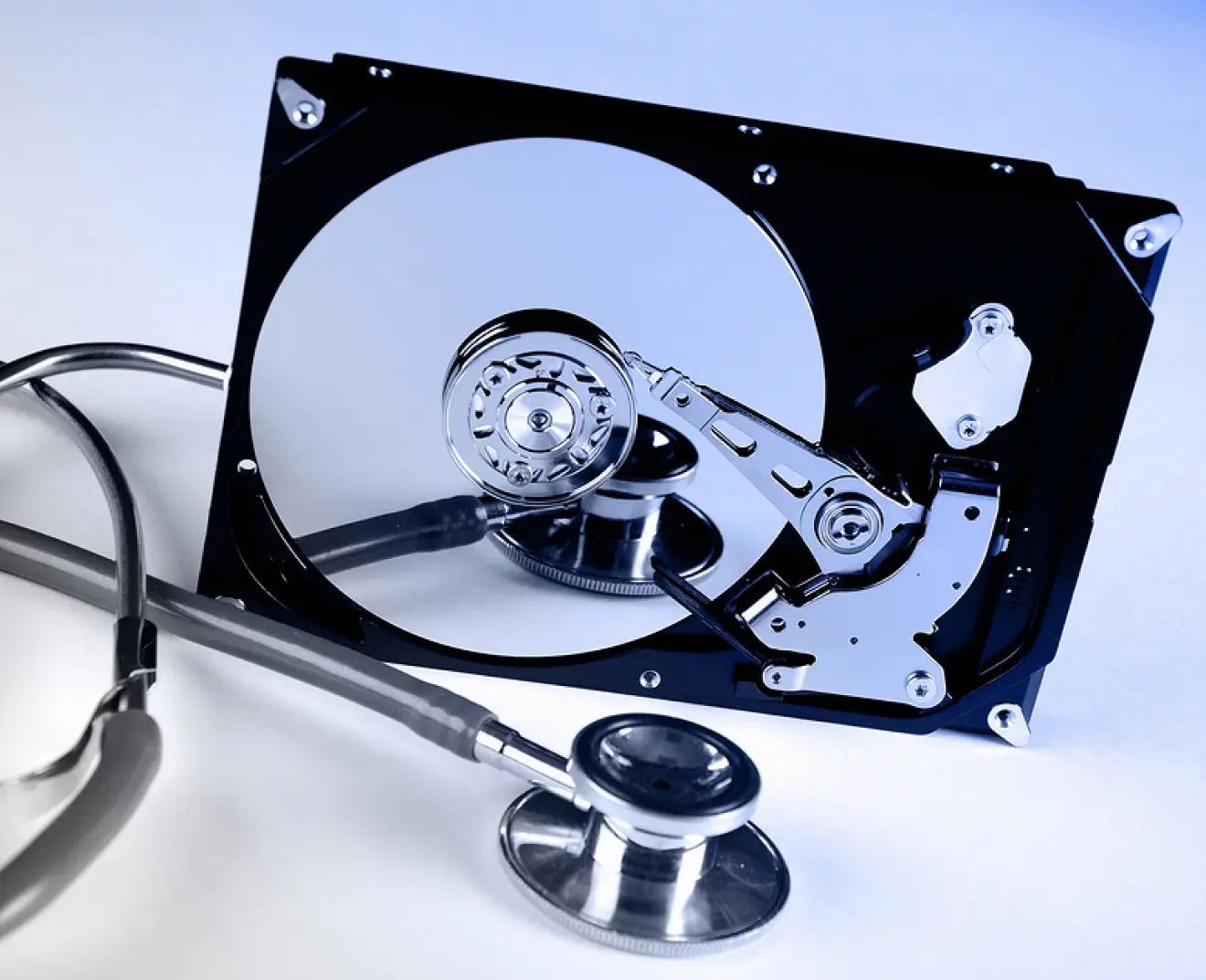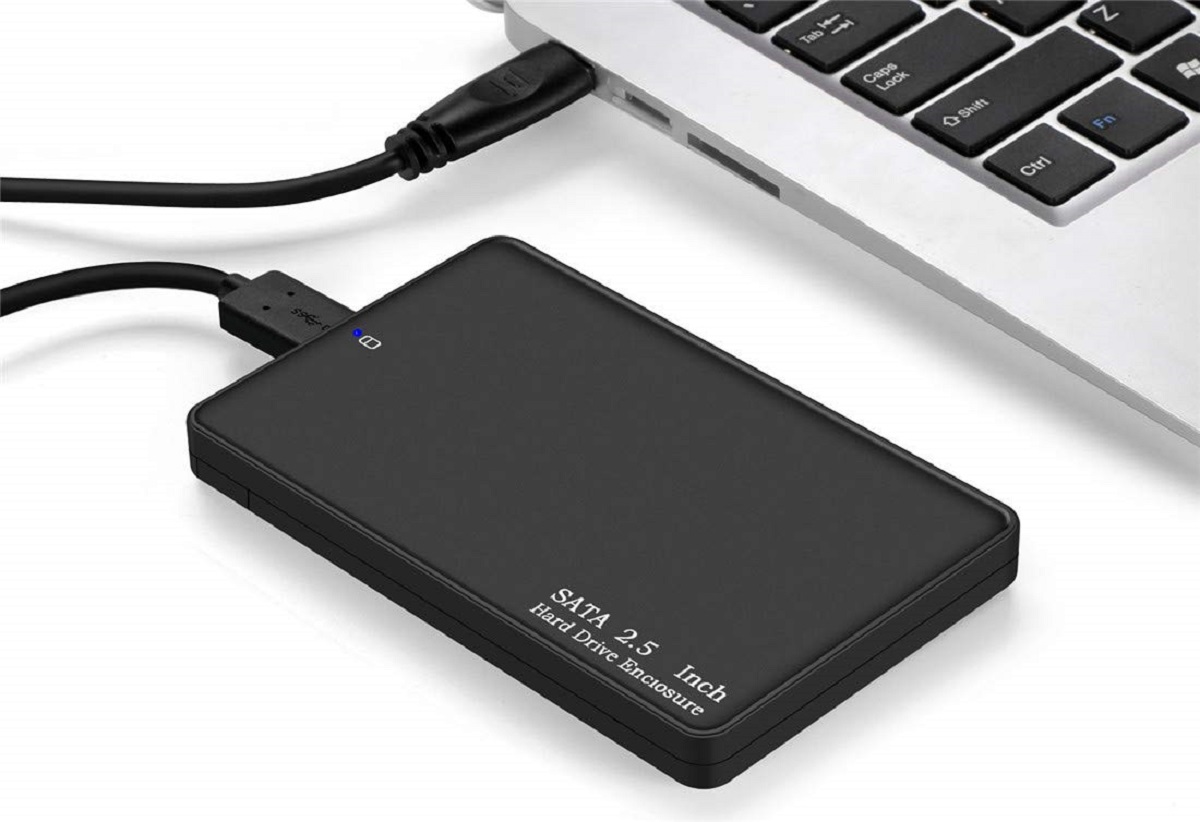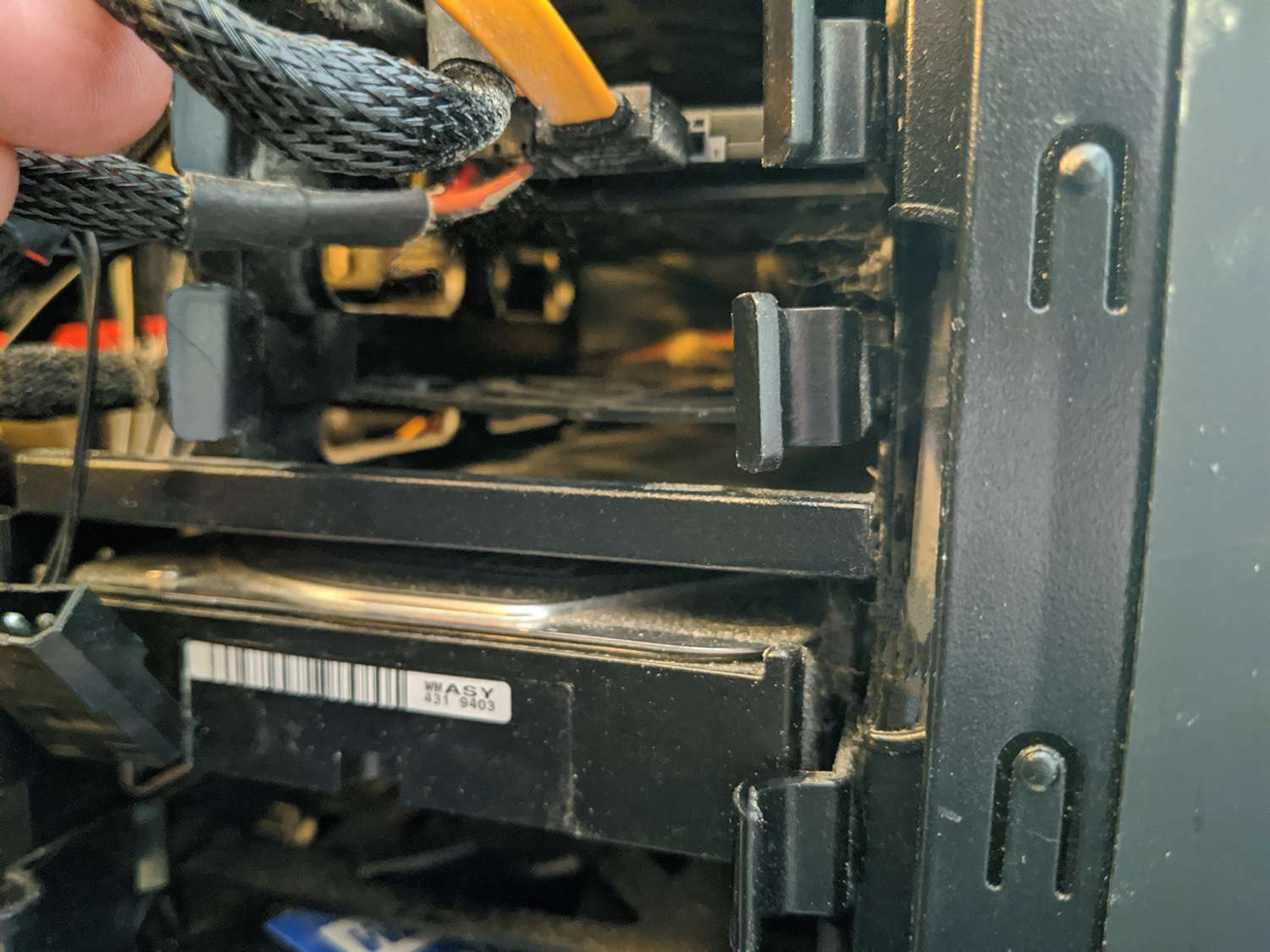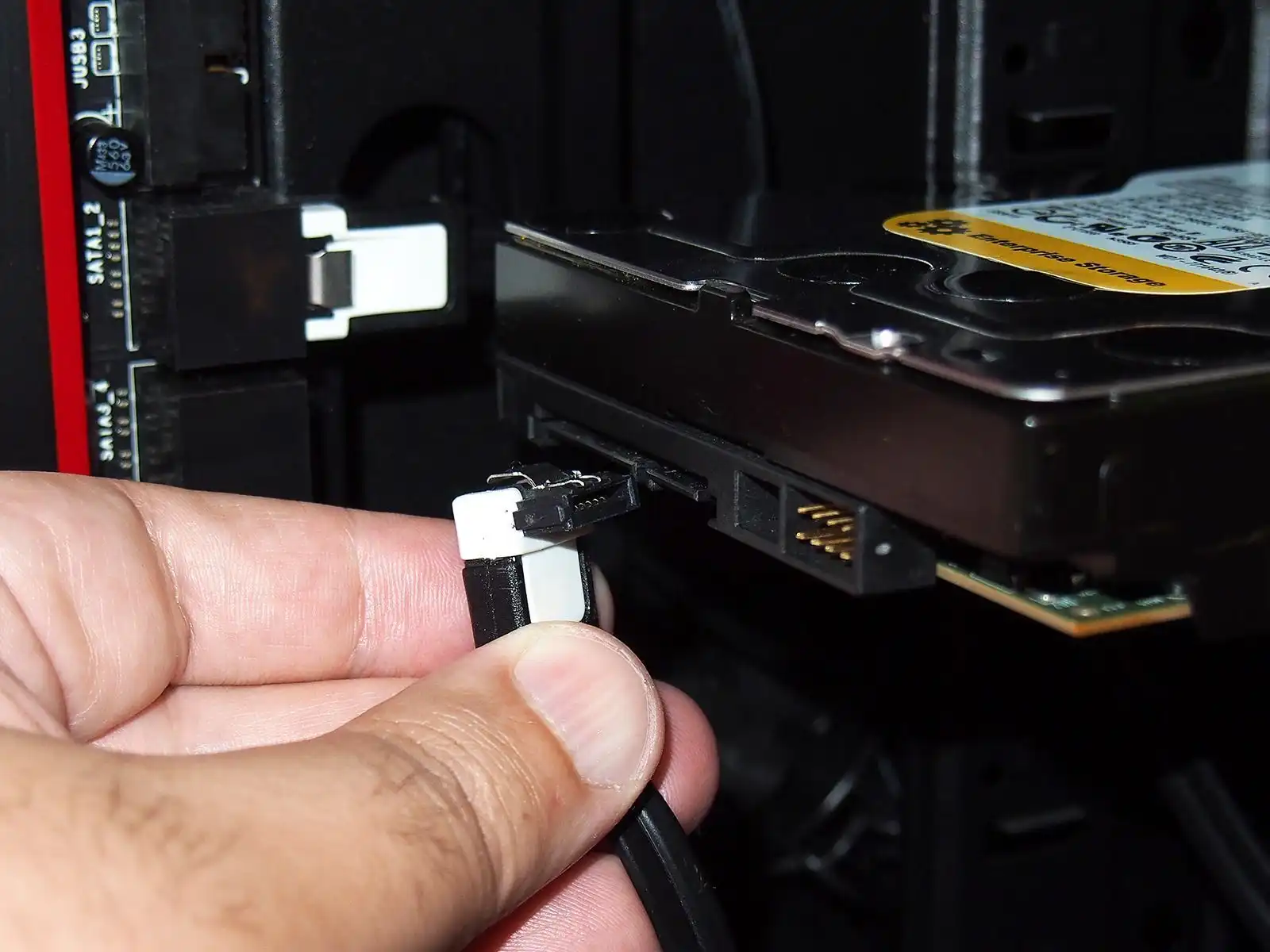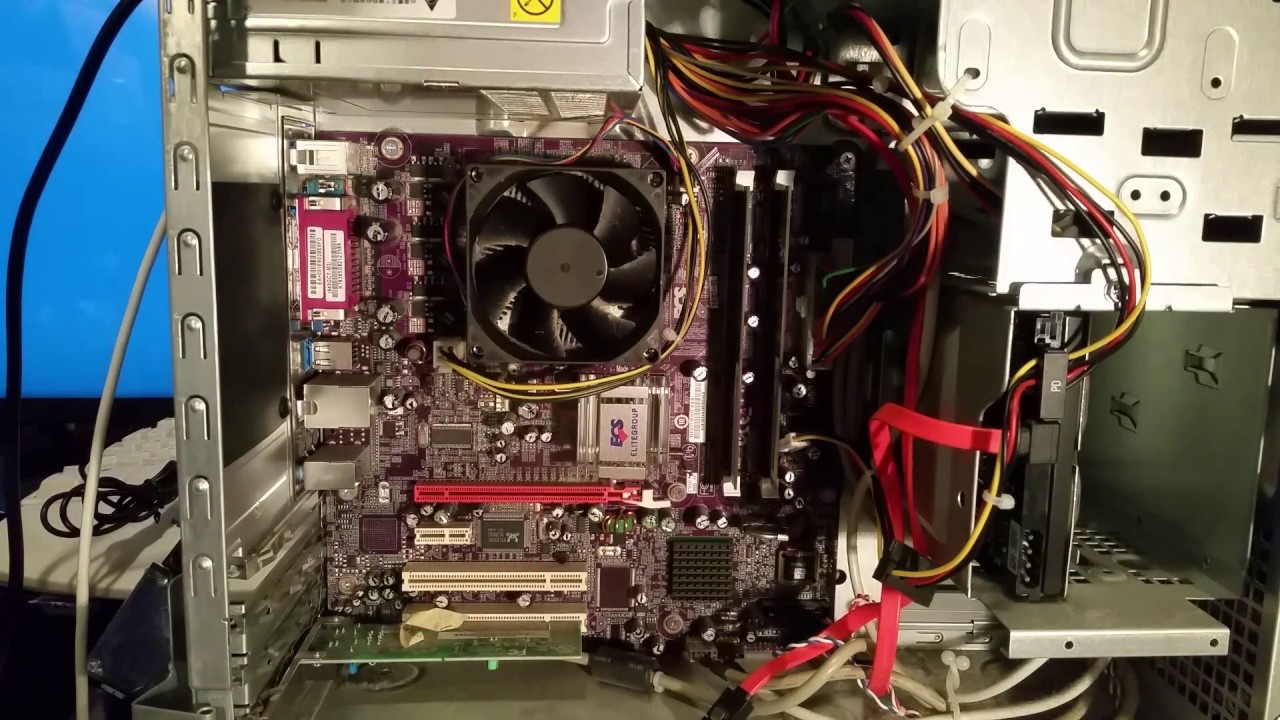Introduction
Welcome to the world of Solid State Drives (SSDs) – the technological marvels that have revolutionized storage devices. Gone are the days of slow and unreliable hard disk drives, as SSDs have emerged as the go-to choice for many computer users. These drives offer unparalleled speed, efficiency, and reliability, making them essential components for any modern computing system.
In this digital age, where data is being generated at an unprecedented rate, it is crucial to ensure the optimal performance and longevity of your SSD. This can be accomplished by regularly testing your SSD to identify any potential issues and take necessary action before they escalate.
By performing a series of tests on your SSD, you can not only diagnose any underlying problems but also evaluate its overall performance and ensure that it is operating at peak efficiency. In this article, we will explore the importance of testing your SSD, discuss basic tests that can be performed, and delve into advanced tests for those seeking a more comprehensive evaluation of their SSD’s capabilities.
Whether you are a casual computer user, a gaming enthusiast, or a professional who relies on their computer’s performance for work, understanding how to test your SSD is crucial to maintain a smooth and efficient computing experience. So, let’s dive in and discover the various tests you can perform to ensure your SSD is operating optimally.
What is a Solid State Drive (SSD)?
A Solid State Drive (SSD) is a storage device that uses integrated circuit assemblies to store data persistently. Unlike traditional hard disk drives (HDDs) that use spinning disks and mechanical parts, SSDs rely on flash memory technology, which allows for faster data access, improved reliability, and reduced power consumption.
The key component of an SSD is the NAND flash memory, which stores data in a non-volatile manner, meaning it retains information even when the power is turned off. This allows for quick startup times, faster file transfers, and overall smoother performance compared to HDDs.
SSDs come in various form factors, including 2.5-inch drives that are compatible with most laptops and desktops, M.2 drives that are smaller and designed for ultra-thin devices, and PCIe SSDs that connect directly to the motherboard for even faster data transfer speeds.
In addition to the speed advantage, SSDs also offer greater durability and resistance to shock and vibration compared to HDDs, as they have no moving parts. This makes them ideal for portable devices such as laptops, where data integrity is crucial.
While the performance benefits of SSDs are clear, it’s important to note that their lifespan is determined by the number of write cycles they can endure. Each memory cell in an SSD has a limited lifespan, after which it may become unreliable or fail. However, advancements in technology and wear-leveling algorithms have significantly improved the endurance of modern SSDs, making them a reliable choice for long-term data storage.
Overall, the rise of SSDs has transformed the storage landscape, offering faster, more reliable, and efficient storage solutions for a wide range of applications. Understanding the fundamental technology behind SSDs will help you make informed decisions about your storage needs and ensure you get the most out of your SSD’s performance.
Why is it important to test your SSD?
Testing your Solid State Drive (SSD) is vital to ensure its reliability, performance, and longevity. Here are some key reasons why testing your SSD is important:
1. Identifying potential issues: By conducting regular tests on your SSD, you can identify any potential issues or errors early on. This includes checking for bad sectors, firmware problems, and other issues that may impact the drive’s performance and data integrity.
2. Ensuring optimal performance: Testing your SSD allows you to evaluate its performance and determine whether it is operating at its peak. This includes measuring read and write speeds, access times, and overall responsiveness. By ensuring optimal performance, you can enhance the efficiency of your computer system and experience faster boot times, quicker file transfers, and smoother application launches.
3. Monitoring health and lifespan: SSDs have a limited lifespan, as each memory cell can only endure a certain number of write cycles. By monitoring the health of your SSD through tests, you can assess its remaining lifespan and take preventive measures if necessary. This can involve implementing strategies to extend the SSD’s longevity, such as reducing unnecessary write operations or using wear-leveling techniques.
4. Preventing data loss: Regularly testing your SSD can help detect early signs of potential data loss. By identifying errors or deteriorating performance, you can address these issues promptly and backup your data before any critical failures occur. This ensures that your valuable files, documents, and media are protected and preserved.
5. Taking advantage of firmware updates: Through testing, you can check for firmware updates specific to your SSD model. Firmware updates often include bug fixes, performance improvements, and compatibility enhancements. Keeping your SSD’s firmware up to date can address any known issues, optimize performance, and ensure compatibility with the latest operating systems.
Basic tests to perform on your SSD
Performing basic tests on your Solid State Drive (SSD) is an essential step in ensuring its performance and reliability. Here are some fundamental tests you should consider:
1. Check for errors: One of the primary tests to perform on your SSD is checking for errors. Use built-in diagnostic tools or third-party software to scan your drive for any bad sectors or file system errors. Rectifying these issues early on can prevent data corruption and improve the overall performance of your SSD.
2. Benchmark your SSD: Benchmarking is a useful way to assess the performance of your SSD. Utilize benchmarking tools to measure the read and write speeds, access times, and input/output operations per second (IOPS) of your SSD. Comparing these results with the manufacturer’s specifications can help you evaluate whether your SSD is performing as expected.
3. Test the SSD’s health: SSD health testing involves monitoring various parameters, such as temperature, wear level, and SMART (Self-Monitoring, Analysis, and Reporting Technology) attributes. Many software tools provide health status indicators and warning signs if any metrics are out of range. Regularly checking the health of your SSD can help you identify potential issues and take appropriate action.
4. Check for firmware updates: Checking for firmware updates is crucial to ensure your SSD is up to date with the latest optimizations and bug fixes. Visit the manufacturer’s website or use dedicated software to check for firmware updates specific to your SSD model. Keep in mind that updating firmware may require backing up and restoring your data, so proceed with caution and follow the manufacturer’s instructions.
5. Perform a Secure Erase on the SSD: If you plan to sell or dispose of your SSD, it is important to perform a secure erase to erase all data on the drive. This ensures that your sensitive information cannot be accessed by unauthorized individuals. Secure erase tools provided by the manufacturer or third-party software can help you securely wipe the SSD without leaving any trace of data behind.
By conducting these basic tests, you can ensure the optimal performance, health, and reliability of your SSD. Regular testing allows you to catch any issues early on, prolong the lifespan of your SSD, and enjoy a seamless computing experience.
Test 1: Check for errors
One of the fundamental tests to perform on your Solid State Drive (SSD) is checking for errors. This ensures the integrity of your data and identifies any potential issues that may affect the performance and reliability of your SSD. Here are some steps to follow when conducting this test:
1. Use built-in diagnostic tools: Many SSD manufacturers provide their diagnostic software to check for errors. These tools can perform various tests to scan your SSD for bad sectors, file system errors, and other issues. Check the manufacturer’s website or user manual to download and install the appropriate diagnostic software for your SSD.
2. Third-party diagnostic software: If your SSD doesn’t have built-in diagnostic tools or if you prefer using third-party software, there are several options available. Popular diagnostic programs include CrystalDiskInfo, HD Tune, and SSDlife. These tools offer detailed information about the health and performance of your SSD and can help you identify any errors or potential issues.
3. Perform a full scan: Once you have the diagnostic software installed, run a full scan on your SSD. This comprehensive scan will analyze the entire drive, checking for bad sectors, file system errors, and other issues that may impact performance. The scan may take some time, but it is important to be thorough to ensure accurate results.
4. Interpret the results: After the scan is complete, carefully review the results provided by the diagnostic software. Look for any notifications or error messages that indicate issues with your SSD. Pay attention to the number of bad sectors, read/write errors, or other indications of potential problems.
5. Take corrective action: If the diagnostic software identifies errors or issues with your SSD, it is important to take appropriate corrective action. In some cases, the software may provide options to fix or repair the errors automatically. Follow the software’s recommendations or consult the manufacturer’s support resources for guidance on how to address the identified issues.
By regularly checking your SSD for errors, you can ensure the reliability of your data and prevent any potential performance degradation. Identifying errors early on allows you to take immediate action, whether it’s repairing the drive, seeking warranty support, or replacing it if necessary. Remember to keep your SSD’s firmware up to date as well, as firmware updates often include bug fixes that can resolve known issues and improve the overall performance of your SSD.
Test 2: Benchmark your SSD
Benchmarking your Solid State Drive (SSD) is an essential test to evaluate its performance and compare it to industry standards. By measuring the read and write speeds, access times, and input/output operations per second (IOPS) of your SSD, you can assess its overall capability and ensure it is operating at its peak. Here’s how you can benchmark your SSD:
1. Choose a benchmarking tool: There are several benchmarking tools available that can assess the performance of your SSD. Popular options include CrystalDiskMark, AS SSD Benchmark, and ATTO Disk Benchmark. These tools provide detailed performance metrics and graphical representations to help you analyze the results.
2. Close unnecessary applications: Before running the benchmark, it is essential to close any unnecessary applications or processes running in the background. This ensures that system resources are dedicated to the benchmarking process, providing accurate results.
3. Select the appropriate test: Benchmarking tools offer various test options, such as sequential read and write, random read and write, and mixed workloads. Choose the test that aligns with your intended usage of the SSD. For example, if you mainly work with large files, a sequential read and write test may be more relevant.
4. Run the benchmark: Once you have selected the test parameters, run the benchmark. The tool will initiate the data transfer process and measure the performance metrics of your SSD. The results will typically include data transfer speeds, latency, and IOPS.
5. Compare the results: After the benchmark completes, review and compare the results with industry standards or the specifications provided by the manufacturer. This will help you determine if your SSD is performing as expected or if there are any areas for improvement.
6. Consider factors affecting performance: It’s important to note that benchmark results can vary depending on several factors, including the capacity of the drive, the interface (SATA, PCIe), the quality of the controller, and the type of NAND flash memory used. Comparing your results with similar configurations will provide a more accurate representation of your SSD’s performance.
7. Take action if needed: If the benchmark results indicate a significant deviation from the expected performance or if your SSD is underperforming, there are a few potential actions to consider. First, ensure that your SSD firmware is up to date, as firmware updates can often address performance issues. Additionally, check if there are any system settings or configurations that may be limiting your SSD’s performance.
Benchmarking your SSD provides valuable insights into its performance and can help you make informed decisions about its usage. By understanding the strengths and weaknesses of your SSD, you can optimize its performance and ensure a smooth computing experience.
Test 3: Test the SSD’s health
Testing the health of your Solid State Drive (SSD) is crucial to ensure its reliability and longevity. Regularly monitoring the health of your SSD can help you identify any potential issues and take proactive measures to prevent data loss or performance degradation. Here are some steps to test the health of your SSD:
1. SMART monitoring: Most modern SSDs support SMART (Self-Monitoring, Analysis, and Reporting Technology), which provides various attributes to monitor the health of the drive. SMART monitoring tools, such as CrystalDiskInfo or SSD Life, can give you insights into critical parameters like temperature, reallocated sectors, uncorrectable errors, and the expected lifespan of the SSD.
2. Temperature monitoring: SSDs can generate heat during operation, which can affect their performance and lifespan. Use temperature monitoring tools to check the temperature levels of your SSD. Excessively high temperatures can indicate inadequate cooling or ventilation in the system and may require additional measures like improved airflow or adding heat sinks to the SSD.
3. Sudden power loss protection: Some SSDs come with additional features like power loss protection, which safeguards your data during unexpected power outages. Verify if your SSD supports this feature and test its effectiveness by simulating power loss scenarios. This ensures that your data remains intact and avoids potential corruption or data loss in such instances.
4. Regular backups: While not a direct test of an SSD’s health, regular backups are essential to protect your data. Consider implementing a reliable backup strategy to create redundant copies of your important files and documents. In case of any unforeseen SSD failure, you can restore your data from the backup without significant loss.
5. Drive health analysis: Using software provided by the SSD manufacturer, perform drive health analysis to evaluate the overall condition of your SSD. The analysis may include status indicators, wear leveling statistics, and remaining lifespan estimation based on the SSD’s usage history. This information can help you determine if any immediate actions or preventive measures need to be taken.
6. Seek professional assistance: If you are unsure about interpreting the health test results or suspect critical issues with your SSD, it is advisable to consult professional assistance. SSD manufacturers or authorized service providers can provide expert guidance or perform in-depth diagnostics to assess the health of your SSD.
By regularly testing the health of your SSD, you can detect potential problems early, ensure data integrity, and take appropriate actions to extend the lifespan of your SSD. Remember to keep your SSD’s firmware up to date, as firmware updates can often include optimizations and bug fixes that improve the overall health and performance of your SSD.
Test 4: Check for firmware updates
Regularly checking for firmware updates for your Solid State Drive (SSD) is crucial to ensure optimal performance, reliability, and compatibility with the latest technologies. Firmware updates can address bugs, improve performance, enhance security, and introduce new features. Here’s how you can check for firmware updates for your SSD:
1. Visit the manufacturer’s website: The first step is to visit the website of the SSD manufacturer. Look for a support or downloads section where firmware updates are typically listed. Search for your SSD model and check if any firmware updates are available.
2. Check the SSD’s user manual: Refer to the user manual or documentation that came with your SSD. Some manufacturers may provide instructions on how to check for firmware updates or list the recommended software for updating the firmware.
3. Use manufacturer-provided software: Many SSD manufacturers provide dedicated software applications to facilitate firmware updates. These tools can automatically detect your SSD model and check for the latest firmware versions. Follow the instructions provided by the software to update the firmware safely.
4. Consult forums and communities: Online forums and communities dedicated to SSDs can be valuable resources for firmware updates. Other users may have shared their experiences and knowledge about firmware updates for specific SSD models. Participating in these communities can provide valuable insights and guidance.
5. Backup your data: Before performing any firmware update, it is essential to back up your data to prevent the loss of important files or documents. Firmware updates usually involve erasing or modifying the existing data on the SSD, so ensure that you have a current backup of your files.
6. Follow the manufacturer’s instructions: When performing a firmware update, carefully read and follow the manufacturer’s instructions. This typically involves downloading the firmware update, running the firmware update software, and following the on-screen prompts to complete the update process. Avoid interrupting the update process or disconnecting your SSD during the update.
7. Verify successful update: After the firmware update is complete, verify that the update was successful. Some firmware update tools provide a confirmation message, while others may display the updated firmware version number. Additionally, check the SSD’s performance and functionality to ensure that there are no issues after the update.
By regularly checking for firmware updates and applying them when available, you can benefit from improvements in performance, features, and compatibility. Firmware updates can address known issues, enhance stability, and provide an overall better user experience with your SSD. It is important to stay informed about firmware updates as they become available to keep your SSD running at its best.
Test 5: Perform a Secure Erase on the SSD
Performing a secure erase on your Solid State Drive (SSD) is an essential step when preparing to sell, dispose of, or recycle your SSD. A secure erase ensures that all data on the SSD is irreversibly erased, preventing any potential data breaches or unauthorized access to your sensitive information. Here’s how you can perform a secure erase on your SSD:
1. Backup your data: Before initiating a secure erase, it is crucial to back up any important data or files stored on the SSD. Once a secure erase is performed, all data on the drive will be permanently deleted and cannot be recovered.
2. Check for manufacturer-provided tools: SSD manufacturers often release specific software or utilities that include secure erase functionality. Visit the manufacturer’s website and search for secure erase tools or software options compatible with your SSD model.
3. Utilize third-party secure erase software: If your SSD manufacturer does not provide a dedicated secure erase tool, you can rely on third-party software applications that support secure erases. Examples include Parted Magic, DBAN (Darik’s Boot and Nuke), and Secure Erase+.
4. Create a bootable media: In some cases, secure erase software may require creating a bootable USB flash drive or CD/DVD to initiate the secure erase process. Follow the instructions provided by the software to create the bootable media.
5. Boot into the secure erase environment: Restart your computer and boot into the secure erase environment using the bootable media created in the previous step. Access the secure erase software from the bootable environment.
6. Select the SSD for secure erase: Within the secure erase software, identify and select the SSD that you want to perform the secure erase on. Take extra caution to ensure that you have selected the correct drive to avoid accidentally erasing data from other drives.
7. Initiate the secure erase: Once you have selected the SSD, follow the prompts within the secure erase software to initiate the process. Secure erase methods vary, but they typically involve overwriting all sectors of the SSD with random data to completely erase the existing data.
8. Verify and confirm completion: After the secure erase process is complete, verify that all data on the SSD has been erased. The software should provide a confirmation message or a report indicating the success of the secure erase operation.
Performing a secure erase on your SSD ensures that your sensitive data is permanently erased and cannot be recovered by unauthorized individuals. It is an essential step to protect your privacy, particularly when selling, disposing of, or recycling your SSD. Always exercise caution and follow the instructions provided by the secure erase software to ensure a successful erase operation.
Additional advanced tests for SSDs
In addition to the basic tests, there are advanced tests that can provide a more comprehensive evaluation of your Solid State Drive (SSD). These tests not only assess the performance but also focus on specific aspects of the SSD’s functionality and durability. Here are some additional advanced tests you can consider:
Test 6: Perform an endurance test: Endurance testing involves subjecting the SSD to continuous read and write operations for an extended period. This test is designed to simulate heavy usage scenarios and determine how well the SSD handles sustained high workloads. By monitoring the SSD’s performance and health during the endurance test, you can evaluate its durability, write amplification, and potential for performance degradation over time.
Test 7: Check for temperature issues: SSDs can be sensitive to temperature fluctuations, which can impact their performance and lifespan. Conducting temperature tests involves monitoring the SSD’s temperature under different workloads or stress conditions. Use temperature monitoring software to ensure that the SSD operates within the recommended temperature range. If excessively high temperatures are detected, it may be necessary to improve cooling, airflow, or consider additional heat dissipation measures for optimal performance and longevity.
Test 8: Test SSD performance under heavy load: This test aims to assess the SSD’s performance and stability when subjected to intense workloads or simultaneous read/write operations. Use workload simulation tools, such as IOmeter or FIO, to generate heavy loads on the SSD and monitor its read/write speeds, latency, and overall responsiveness. This provides insights into how the SSD performs in demanding scenarios and helps identify any potential bottlenecks or performance limitations.
Test 9: Evaluate power efficiency: Power efficiency testing involves measuring the SSD’s power consumption during specific operations, such as idle, read, and write activities. This test helps assess how efficiently the SSD utilizes power and can be particularly important for portable devices where battery life is a concern. Compare the power consumption of your SSD with the manufacturer’s specifications or similar SSD models to determine its energy efficiency.
Test 10: Assess data recovery capability: Data recovery is an essential aspect to consider when selecting an SSD. Some advanced SSDs offer built-in data recovery or protection mechanisms, such as power loss protection or advanced error correction algorithms. Consider testing the data recovery capability by intentionally inducing power loss or simulating data corruption scenarios. This will help you evaluate the SSD’s ability to recover data integrity and provide reassurance when it comes to data protection.
Performing these additional advanced tests provides a more thorough assessment of your SSD’s performance, durability, power efficiency, and ability to handle varying workloads. Keep in mind that these tests may require specialized tools or software, so it is essential to follow the instructions provided by the tools and consult the manufacturer’s resources when needed. By conducting these advanced tests, you can gain valuable insights into your SSD’s capabilities and make informed decisions about its usage and potential optimizations.
Test 6: Perform an endurance test
An endurance test is an advanced benchmark that involves subjecting your Solid State Drive (SSD) to continuous read and write operations for an extended period. This test is designed to simulate heavy usage scenarios and assess the durability and performance of the SSD under sustained high workloads. Performing an endurance test can provide insights into the endurance rating, write amplification, and potential performance degradation of your SSD over time.
To perform an endurance test on your SSD, follow these steps:
1. Select appropriate benchmark software: Choose a benchmarking tool that supports endurance testing, such as HD Tune Pro or SSD Life. These tools come with options to perform long-term write tests.
2. Create a benchmark profile: Set up your benchmarking tool to run continuous read and write operations on your SSD. Configure the test to target the SSD’s full capacity or a specific portion based on your requirements.
3. Execute the endurance test: Start the endurance test and allow it to run for an extended duration. It is recommended to run the test for at least several hours or even days to simulate heavy workloads the SSD may face during regular usage.
4. Monitor SSD’s performance and health: While the endurance test is running, closely monitor the SSD’s performance metrics, including read/write speeds, access times, and error rates. Pay attention to any signs of performance degradation or abnormal behavior.
5. Evaluate endurance rating: Assess the SSD’s endurance rating, which denotes the number of program/erase (P/E) cycles it can withstand before experiencing potential failures. Compare the test results to the manufacturer’s specifications or endurance ratings to determine if the SSD is meeting expectations.
6. Observe write amplification: Write amplification measures how much the actual data written to the SSD exceeds the logical data written by the host system. An increase in write amplification can reduce the lifespan of the SSD. Analyze the endurance test results to determine if write amplification is within acceptable limits.
7. Consider health monitoring tools: Make use of SSD health monitoring tools, such as CrystalDiskInfo or the manufacturer’s specific tool, to track the SSD’s health attributes, including wear leveling count, remaining lifespan, and temperature. These metrics can help assess the impact of the endurance test on the overall health of the SSD.
Performing an endurance test provides valuable insights into your SSD’s performance and durability under heavy workloads. It helps determine its endurance rating and write amplification, allowing you to assess its suitability for specific usage scenarios. Remember to perform regular backups of your data prior to running the endurance test to prevent loss in case of any unexpected failures. By conducting an endurance test, you can ensure that your SSD meets your performance and longevity expectations, and make informed decisions based on the test results.
Test 7: Check for temperature issues
Monitoring the temperature of your Solid State Drive (SSD) is important to ensure optimal performance and longevity. SSDs can generate heat during operation, and excessive temperatures can negatively impact their performance and lifespan. Conducting temperature tests allows you to assess the SSD’s temperature under different workloads or stress conditions and take appropriate measures to maintain temperature within acceptable limits.
Here’s how you can check for temperature issues in your SSD:
1. Use temperature monitoring software: Various software tools are available to monitor the temperature of your SSD. Check if your SSD manufacturer provides dedicated software for temperature monitoring or use third-party software such as HWMonitor or CrystalDiskInfo. These tools provide real-time temperature readings and can track historical temperature data.
2. Monitor temperature during regular usage: Keep an eye on the SSD’s temperature during normal usage. Note any temperature fluctuations and ensure that the temperature remains within the manufacturer’s specified operating range. This will help you identify if there are any temperature issues under normal working conditions.
3. Conduct stress tests: Performing stress tests can put the SSD under heavy workloads and help evaluate its temperature under extreme conditions. Run intensive tasks or utilize stress-testing tools like AIDA64 or Prime95 to simulate high system loads. Monitor the SSD’s temperature during these tests to identify any temperature spikes, which could indicate potential cooling or airflow issues.
4. Check system cooling: Inspect the cooling system of your computer to ensure it is functioning properly and efficiently dissipating heat. Check for proper placement and functioning of fans, especially those in close proximity to the SSD. Consider improving airflow within your system by adjusting fan speeds, cleaning dust filters, or adding additional cooling components if necessary.
5. Consider thermal pads or heat sinks: If your SSD model supports it, consider adding a thermal pad or heat sink to help dissipate heat from the SSD. These additional thermal management solutions can improve heat dissipation and ensure that the SSD stays within safe temperature limits.
6. Optimize system ventilation: Ensure that your computer case has adequate ventilation to prevent heat buildup. Remove any obstructed airflow paths, keep cables organized, and position the computer in a well-ventilated area. Proper system ventilation can help maintain lower temperatures for all components, including the SSD.
7. Monitor temperature over time: Continuously monitor the SSD’s temperature over an extended period, especially during heavy workloads or extended usage sessions. Compare the temperature readings against the manufacturer’s specified temperature limits for your SSD model to ensure that it remains within the recommended operating range.
By regularly monitoring the temperature of your SSD, you can identify any temperature-related issues that may impact its performance or lifespan. Taking preventive measures to maintain the temperature within acceptable limits ensures optimal performance and reliability of your SSD for years to come.
Test 8: Test SSD performance under heavy load
Testing the performance of your Solid State Drive (SSD) under heavy load is a crucial step to evaluate its stability, responsiveness, and overall capabilities. By subjecting your SSD to intense workloads and simultaneous read/write operations, you can assess how well it performs and ensure it can handle demanding scenarios. Here’s how you can test the performance of your SSD under heavy load:
1. Select a workload simulation tool: Choose a workload simulation tool such as IOmeter or FIO (Flexible I/O Tester) that allows you to generate heavy workloads on the SSD. These tools enable you to configure specific read/write patterns, queue depths, and block sizes to simulate real-world usage scenarios.
2. Configure the workload parameters: Set up the workload simulation tool to generate a heavy load on your SSD. Configure parameters such as the number of simultaneous threads, the amount of data being read/written, and the duration of the test. Consider simulating different types of workloads to assess the SSD’s performance under a variety of scenarios.
3. Run the workload test: Start the workload test and allow it to run for a significant duration. During the test, monitor key performance metrics such as read/write speeds, latency, and IOPS (Input/Output Operations Per Second). These metrics will provide insights into the SSD’s performance under heavy workloads.
4. Analyze performance metrics: After the workload test is complete, analyze the performance metrics obtained from the workload simulation tool. Look for any performance bottlenecks, latency spikes, or inconsistencies that may indicate potential limitations of the SSD under heavy load.
5. Compare results to specifications: Compare the test results with the manufacturer’s specifications or performance ratings for your SSD. This will help you determine if your SSD is meeting the expected performance benchmarks and if any discrepancies need to be addressed.
6. Consider optimizing system configuration: If the performance test reveals subpar results or indicates performance limitations, consider optimizing your system configuration. Ensure that the SSD is connected to the appropriate interface (SATA, PCIe) and that the drivers and firmware are up to date. Additionally, check if there are any system settings or configurations that may be impacting the SSD’s performance under heavy loads.
7. Repeat the test periodically: It is beneficial to repeat the performance test periodically, especially after any significant hardware or software changes. This will help you track any improvements or changes in the SSD’s performance over time and address any arising issues promptly.
Testing SSD performance under heavy load provides valuable insights into its capability to handle demanding workloads efficiently. By ensuring that your SSD can handle high-performance requirements, you can optimize its usage in scenarios such as gaming, video editing, or large-scale data processing. Regularly assessing SSD performance under heavy load will help you maintain a responsive and reliable computing experience.
Conclusion
Testing your Solid State Drive (SSD) is a critical step in ensuring its performance, reliability, and longevity. By following the basic tests such as checking for errors, benchmarking, and assessing the SSD’s health, you can identify potential issues, optimize performance, and mitigate data loss risks. Additionally, advanced tests like endurance testing, temperature monitoring, and performance under heavy load analysis provide deeper insight into the SSD’s capabilities and its ability to handle demanding scenarios.
Regularly checking for firmware updates ensures that your SSD remains up to date with optimizations, bug fixes, and compatibility improvements provided by the manufacturer. Securely erasing your SSD when necessary protects your sensitive data from falling into the wrong hands.
Implementing these tests and preventive measures helps maintain the SSD’s performance, health, and data integrity. It is important to consult the manufacturer’s guidelines, use reliable software tools, and conduct tests periodically to keep track of any changes in the SSD’s performance.
By taking the time to test and monitor your SSD, you can ensure that it consistently operates at its optimal level, maximizing its speed, efficiency, and reliability. Ultimately, this translates into a smooth and seamless computing experience, whether you are a casual user, a power user, or a professional relying on your computer’s performance for work.
Remember, the tests and actions discussed in this article are general guidelines. Always consult the SSD manufacturer’s documentation and follow their recommendations for specific instructions and best practices tailored to your SSD model.










